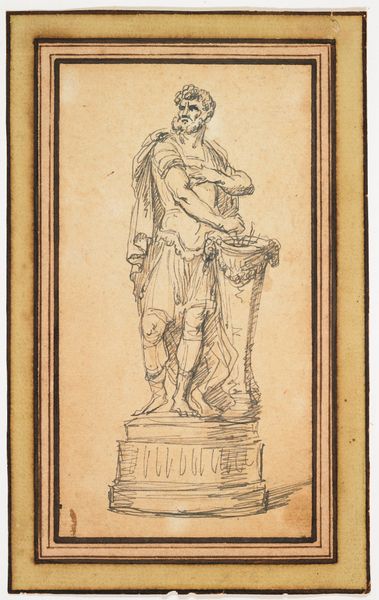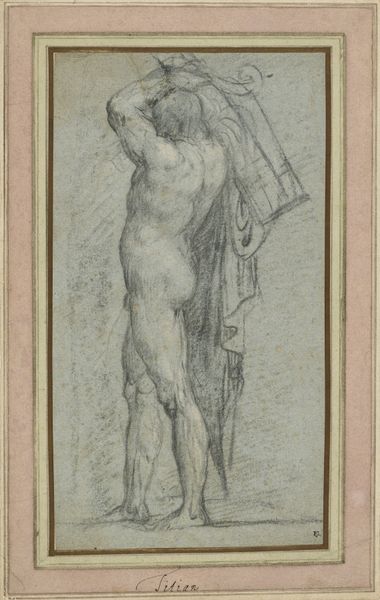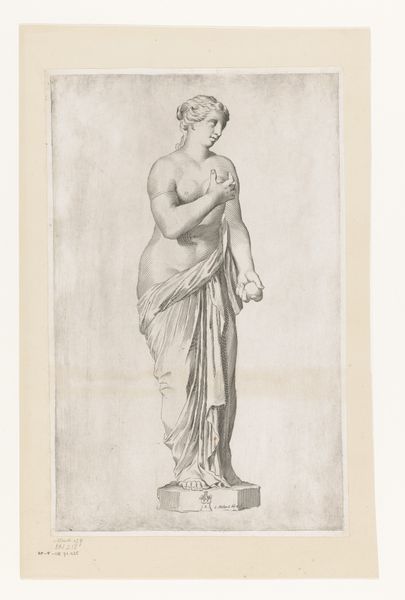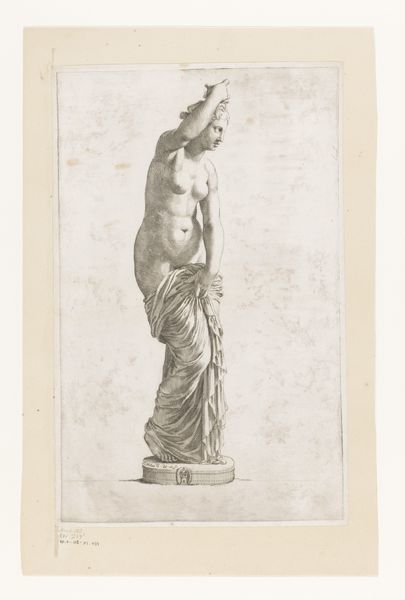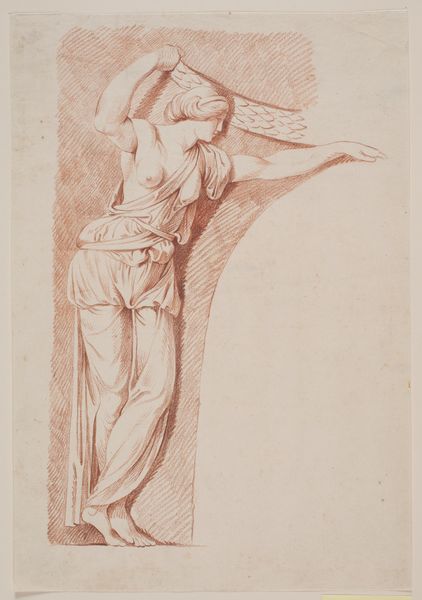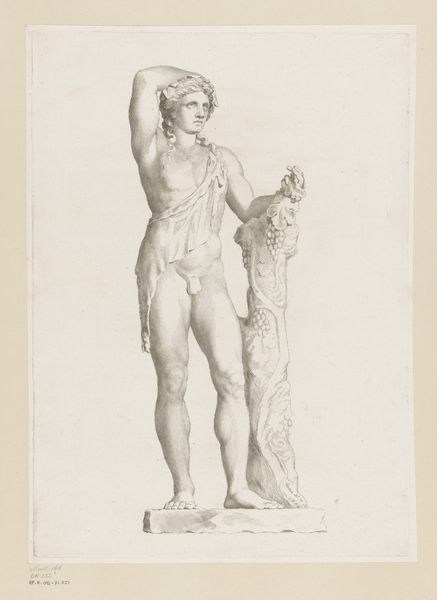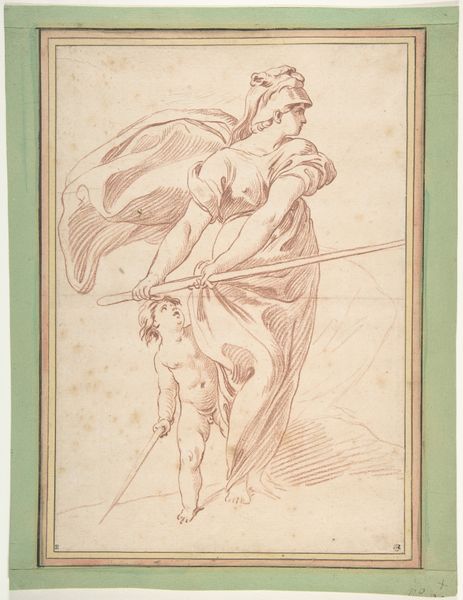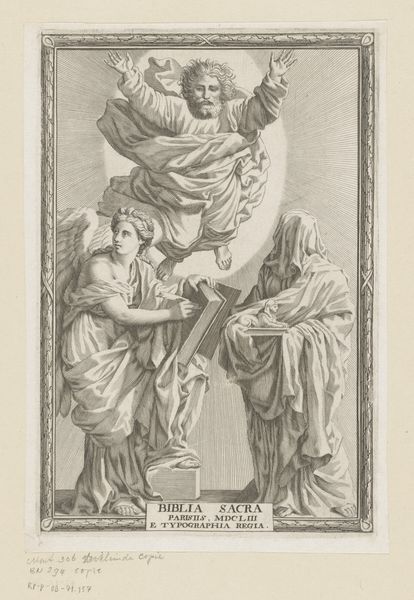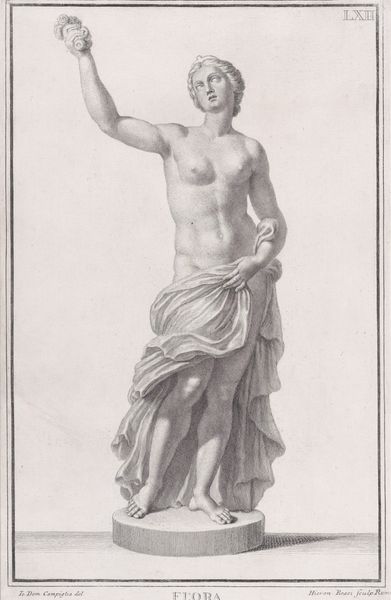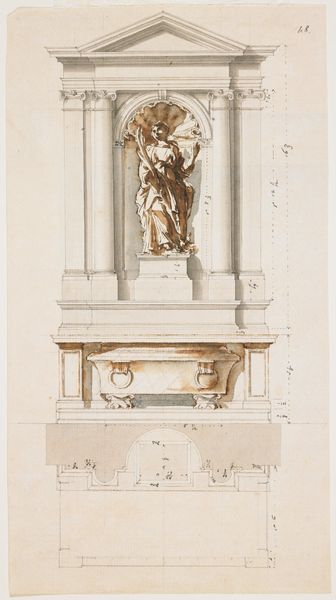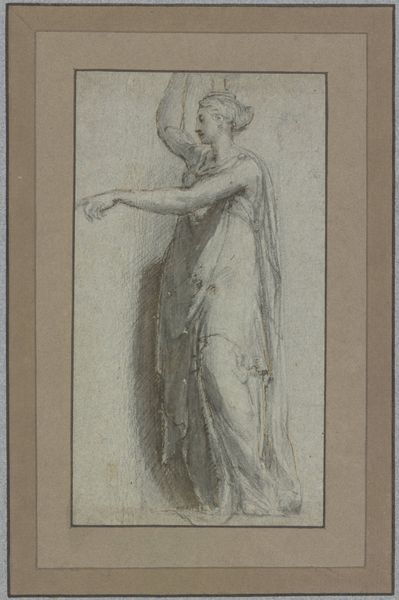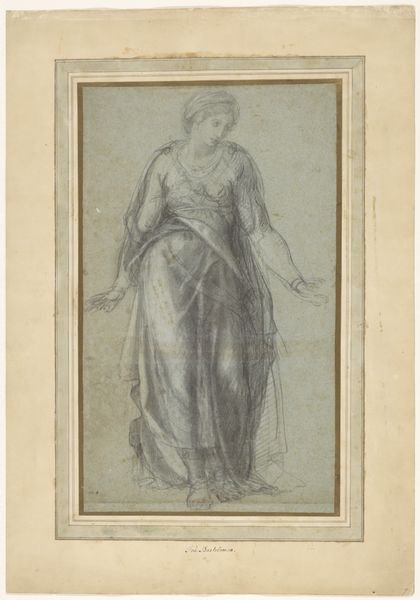
drawing, print, pencil
#
drawing
#
neoclacissism
# print
#
landscape
#
figuration
#
coloured pencil
#
pencil
Dimensions: Sheet: 18 1/2 × 12 3/16 in. (47 × 31 cm)
Copyright: Public Domain
Curator: What an ethereal image! The light and shadow give the figure an almost spectral presence. Editor: Indeed. Here we have "Design for a Torchère," a drawing rendered in pencil and colored pencil dating to between 1770 and 1790, created by Jean Jacques François Le Barbier. Curator: Torchère means 'torch holder', I presume? She looks like some classical priestess. What meanings or rituals could the artist be pointing us towards here? I’m particularly struck by her delicate fingers just touching the vessel, almost reluctantly. Editor: It is fascinating to think about the context of its creation. Le Barbier was working during the rise of Neoclassicism, which looked back to the art and culture of ancient Greece and Rome for inspiration, particularly within court circles. There was renewed interest in civic virtues, which became a popular way for artists to subtly show political and philosophical ideas. Curator: Yes, Neoclassical art always has this veneer of cool reason but it also contains a very particular erotic energy. It also reminds me a little bit of mannerist sculpture where figures become supports or part of the architecture. How the representation changes and effects our thinking. Editor: Absolutely. Consider how Le Barbier would have encountered torchères: not in democratic assemblies, but in the palaces and estates of the aristocracy. Her attire echoes antiquity, but also highlights that art doesn’t simply arise, neutral, out of history; rather its creators are tied to distinct sociopolitical worlds. Curator: What then would it mean for someone, a wealthy family let's say, to light a room with a torch supported by what looks like a vestal virgin? How can we interpret the values that resonate from such a constructed symbolism? The way things should be perhaps. Editor: In a way, by evoking classical virtue within an object designed for luxurious display, it normalizes social hierarchies of power and value under the banner of aesthetic refinement and classical order. This piece demonstrates so well how design is never neutral. Curator: It leaves me wondering, if the figures which carry symbolic and practical weight remain essentially unchanged in our culture and thinking. Editor: It serves as a good example of how the past is not just passively received, but actively shaped and displayed to inform our present realities.
Comments
No comments
Be the first to comment and join the conversation on the ultimate creative platform.
